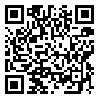BibTeX | RIS | EndNote | Medlars | ProCite | Reference Manager | RefWorks
Send citation to:
URL: http://frooyesh.ir/article-1-6129-en.html
2- Department of Psychology, Roudehen Branch, Islamic Azad University, Roudehen, Iran. ,
The present study aimed to predict the tendency to drink alcohol based on distress tolerance and emotion regulation in adolescents. The present study method was descriptive-correlational. The statistical population included all male and female adolescents in the second high school of District 8 of Tehran in the academic year 2024-2025, from which 200 people were selected as samples using the available and non-random sampling method. Data were collected using the Sheikh's Alcohol Consumption Tendency Questionnaire (ACTQ, 2014), Simons & Gaher's Distress Tolerance Scale (DTS, 2005), and Garnefski & Kraaij's Cognitive Emotion Regulation Questionnaire (CERQ, 2006). Multiple regression analysis was used to analyze the data. The findings of the study showed that distress tolerance and emotion regulation were able to predict the tendency to drink alcohol (p<0.05) and explained a total of 39% of the variance in the tendency to drink alcohol. Therefore, it can be concluded that distress tolerance and emotion regulation play a significant role in predicting the tendency to consume alcohol, and it seems necessary to pay attention to these factors to reduce the tendency to consume alcohol in adolescents.
Received: 2025/03/26 | Accepted: 2025/04/16 | ePublished: 2025/08/1
| Rights and permissions | |
 |
This work is licensed under a Creative Commons Attribution-NonCommercial 4.0 International License. |





